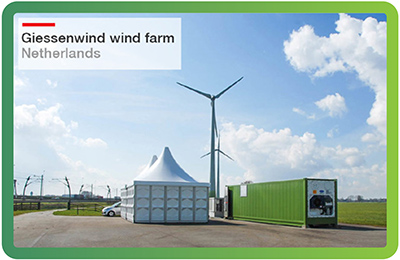 Uncontrolled overproduction from distributed renewables can cause grid issues at all levels. This is one of the key challenges of the energy transition, and unlocking flexibility via demand response (DR) is critical to this. In particular, unlocking the distributed flexibility potential in medium and low-voltage grids will be important, which has little precedent in the market to date.
Uncontrolled overproduction from distributed renewables can cause grid issues at all levels. This is one of the key challenges of the energy transition, and unlocking flexibility via demand response (DR) is critical to this. In particular, unlocking the distributed flexibility potential in medium and low-voltage grids will be important, which has little precedent in the market to date.
To address this, the H2020 DRIvE project has developed a full-fledged platform for seamlessly connecting distributed assets within a single environment. Validation is performed through pilot demonstrations ranging in all stages of the energy-value chain, from large-scale generation plants to residential community and tertiary buildings. A key piece of this validation is digital-twin and control hardware in the loop (C-HIL) testing, which accelerates implementation by directly addressing integration issues and providing early validation before beginning costly physical tests. As the project closes its final stage of validation, the first results already show significant potential to unlock flexibility from generation assets.
The Giessenwind demonstration site, featuring transmission lines, a transformer station and battery storage for excess energy from wind generation, has provided an excellent opportunity to benchmark and validate the potential flexibility available from voltage control, frequency control testing and congestion management actions via this single platform approach. Results from frequency containment reserve and Congestion Management tests show that current equipment can utilize these algorithms, significantly reducing the need for new CAPEX installations for grid reinforcement by as high as 20%.
This approach has also simplified the integration stages of these algorithms. During the model validation process with the digital twins, bugs in MODBUS maps and other communication issues can and have been identified quickly and repaired; issues that could significantly harm physical equipment if deployed directly to the devices. This improves scaling capacity in a low-risk setting, minimizing the risks that real devices may face due to human errors.
In addition to the direct energy savings results, easy and reliable virtual testing procedures allow for extreme scenario and future capability testing that would otherwise not be cost-effective in physical testing.
In the Giessenwind site, this included analyzing the effects of islanding and highly irregular frequency scenarios. C-HIL Digital twins have already proved important in applications at other demonstration sites as well, with the results of full algorithm validation tests on Time of Use Energy Bill optimization and Max Power Consumption, serving as a critical step in assuring building managers and owners that new control actions perform as intended and won’t negatively impact existing systems.
The tests at Giessenwind have shown that by using digital-twin C-HIL validation, novel DR capabilities can be tested in a low-risk setting earlier in the production process, saving time and potentially dangerous risks associated with physical piloting. Scenario validation with digital twins is an excellent means to safely gather information on system performance for new applications with little precedent in the existing market. Such tests are currently also being performed for residential and tertiary building applications.
More info:
Website: https://www.h2020-drive.eu/
Follow us at :
Twitter: https://twitter.com/DRIvE_EUproject
LinkedIn: https://www.linkedin.com/company/drive-eu/
This project has received funding from European Union's Horizon 2020 research and innovation programme under grant agreement no.774431